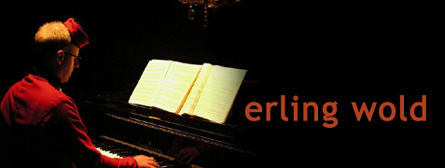Hearing the premiere of Paul Dresher's latest piece, a concerto of his Quadrachord long string instrument with the Berkeley Symphony Orchestra, and especially his quick lecture beforehand on the details of the Just Intonation aspects of his piece (natural harmonics on his instrument, natural harmonics in the horns, and maybe in the trumpets, a subgroup of 15 strings tuned 40 cents lower to bring them into correspondence with some of the higher partials), I was reminded once again of the lazy connection between music theories and scientific theory. Even in my deepest and darkest days spent connected to the JI world, nothing I read - and I read a lot - ever explained, except in the most mystical terms, why Just Intonation was better than any other pitch-choosing mechanism. The purity of the intervals was mentioned, the transcendental perfection of small integers, the lack of beats, the sacredness of the harmonic series, and of course the music of the spheres. But does any of that say anything about badness or goodness or are such considerations irrelevant in the face of such revealed truth? The realities are mundane in comparison, e.g. that people like beats, that they tune pianos and 12 string guitars and mandolins and Balinese Gamelans to emphasize them, and why are small integers better than irrational number, since as Cantor found, there are more of the latter than the former? And I wouldn't be the first to point out that the JI-ness of the vibrating world exists only in some Platonic ideal, as real strings and real columns of air have harmonic series which diverge from that ideal, sometimes by a lot, and brake drums and bells and lots of other wonderful musical machines have harmonics that are decidedly inharmonic, a lovely and self-contradictory description of the partials whose frequency relationships one might otherwise think defined the word.
In music, I love such nonsense. I think it is important somehow, like reading a kōan, putting the mind in a place where mere truth is irrelevant, but I also do have a deep lasting long term relationship with science - and maybe even a love for it - which goes back to my youth, discovering one day a large cache of old Scientific Americans and reading through them all from cover to cover and cardboard box to cardboard box. It leads me to still spend days reading through scientific and mathematical articles, scribbling down my own calculations and pondering the deep search for truth. Although I sometimes dissemble when discussing it, my doctorate is not in music at all, but in Electrical Engineering, and I recall a story from those days. My research advisor was Al Despain, a wild-haired crazy man who was willing to skim off some money from his various defense grants to support me, a poor graduate student interested in the intersection of music and technology in those heady times, when one had to write one's own file system to get samples off a disk fast enough to achieve audio rates, when one had to build one's own D/A converter to listen to the audio in real time. But Al's true love was all things military, and one day he told me to be at his house the next morning early, where we were met by a limo and, quickly chewing through several columns of Fig Newtons, headed to the airport and a quick flight to San Diego. Again, a limo, and bustled into a room, I found myself giving a talk on my thesis to a room full of JASONs, the notorious and/or acclaimed MITRE-related Defense Advisory Group, including the esteemed Freeman Dyson. I bumbled through, in awe, and wondered at the attendees most celebrated, not able to say what I really wanted to say: in fact some kind of gushing fanboy babble.
Last week, driving back from visiting my mother and my in-laws, I was reminded of this experience when listening to a Relatively Prime podcast on Paul Erdős. The subject is dear to my heart, and I glow with a very small respectability due to a paper I published with the mathematician Oscar S. Rothaus on Gaussian Residue Arithmetic, giving me an Erdős number of 5 to his 4. The podcast featured three mathematicians with Erdős numbers of 1, and one of them told how he was invited by Erdős to give a talk at a symposium where no one showed up except Erdős, the organizer of the symposium and Stanislaw Ulam, and how proud he was to give his talk to such a small but illustrious audience. In life and work, we love our icons and we hope that someday they may love us.
Thursday, November 1, 2012
Subscribe to:
Post Comments (Atom)






2 comments:
Here are a few. you can tune JI directly by ear. even intervals you haven't heard before. It also can give a scale with more different size intervals than an ET. This is great for scales with less than 12 where you can get the most variety with less tones (we see this throughout the world and why they avoid equal scales). Each key can sound different which is the point of changing keys I thought. If all you tunings are in JI it is easy to have them overlap and have common points that meet. with different ETs you have one tone in common. It tends to interact with rooms in interesting ways exploiting resonances. I like beating but i like to tune them too.
What are the great advantages with ET except all keys sound the same?
Thanks for the comment. You are correct about the ease of tuning JI intervals by ear. And I agree that ET is dulled by its uniformity. However, there are plenty of non-JI tunings that don't suffer from ET's faults.
Post a Comment